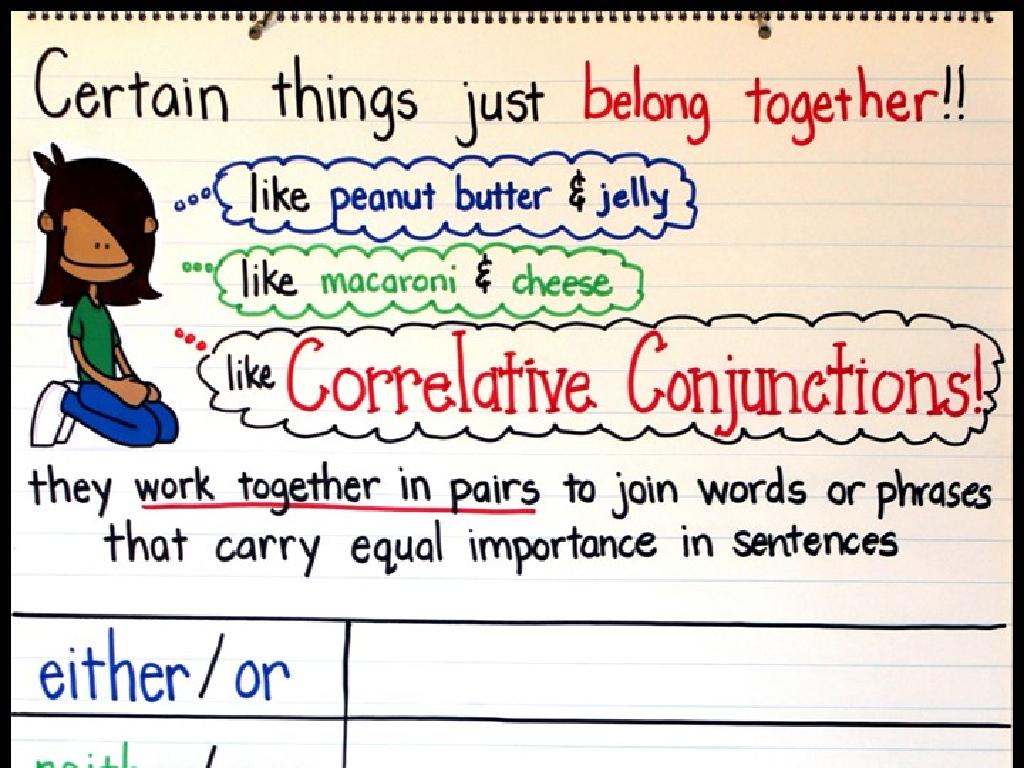Genetic Variation In Sexual Reproduction
Subject: Science
Grade: Sixth grade
Topic: Anatomy And Physiology
Please LOG IN to download the presentation. Access is available to registered users only.
View More Content
Introduction to Genetics: Variations in Life
– Exploring our genetic makeup
– Genetics determine traits like eye color, height.
– Defining genetic variation
– Genetic variation means differences in DNA among individuals.
– Significance in sexual reproduction
– It leads to diverse traits, which can be beneficial for survival.
– Genetic diversity benefits
– A diverse gene pool can improve a population’s adaptability.
|
This slide introduces the concept of genetics and its role in creating diversity through sexual reproduction. Genetic makeup is the unique combination of DNA that results in different traits. Genetic variation refers to the differences in genes between individuals or populations, and it’s crucial for the survival of species. In sexual reproduction, genetic variation is important because it leads to offspring with a mix of traits from both parents, contributing to a diverse population that can adapt to changing environments. Discuss the benefits of genetic diversity, such as increased resistance to diseases and environmental changes. Encourage students to think about how variation appears in traits they can observe, like hair color, in their classmates.
Basics of DNA: The Blueprint of Life
– What exactly is DNA?
– DNA stands for Deoxyribonucleic Acid, a molecule in cells.
– DNA’s role in inheritance
– DNA determines traits passed from parents to children.
– Understanding DNA as life’s blueprint
– DNA contains instructions for building an organism.
– Exploring genetic variation
|
This slide introduces the fundamental concepts of DNA to help students understand its role in genetics and inheritance. DNA, or Deoxyribonucleic Acid, is a molecule that exists in all living cells and carries the genetic instructions for the development, functioning, growth, and reproduction of all known organisms. It’s crucial for students to grasp that DNA is the reason children inherit traits from their parents, such as eye color or height. DNA acts as a blueprint for an organism, with sections called genes that dictate different characteristics. The slide also sets the stage for discussing genetic variation, which is a result of the unique combination of DNA each individual receives from their parents through sexual reproduction. Encourage students to think of DNA as a recipe book, where each recipe represents a trait, and the entire collection creates the unique individual.
Genes and Chromosomes: Blueprint of Life
– What exactly are genes?
– Genes are DNA segments that dictate traits.
– Exploring chromosomes
– Chromosomes are DNA strands that carry genes.
– Genes & chromosomes shape traits
– Traits like eye color are determined by these.
– The role in sexual reproduction
|
This slide introduces the fundamental concepts of genetics, focusing on genes and chromosomes. Genes are the basic units of heredity made up of DNA and are responsible for different traits in living organisms. Chromosomes are long strands of DNA that contain many genes. They play a crucial role in sexual reproduction, ensuring genetic variation. Each parent contributes one set of chromosomes, which combine to give offspring a mix of traits. This genetic diversity is essential for the survival and adaptation of species. Encourage students to think of traits they have inherited and how these might have come from their parents’ genes and chromosomes.
Genetic Variation in Sexual Reproduction
– Sexual reproduction process
– Involves two parents contributing genetic material
– Offspring inherit mixed genes
– Each parent gives half of their genes to create unique offspring
– Meiosis creates genetic diversity
– Meiosis is cell division that results in four unique daughter cells
– Importance of genetic variation
|
This slide introduces the concept of genetic variation as a result of sexual reproduction. Explain that sexual reproduction involves the fusion of genetic material from two parents, leading to offspring that are genetically distinct from their parents and each other. Highlight how meiosis is a special type of cell division that ensures each offspring receives a unique combination of genes, contributing to the genetic diversity of a population. This diversity is crucial for the survival and adaptation of species. Engage students with examples of genetic traits they may have inherited from their parents, such as eye color or hair type, to make the topic relatable and easier to grasp.
Exploring Genetic Variation
– Causes of genetic variation
– Sexual reproduction combines genes differently.
– Nature’s genetic diversity
– Different beak shapes in finches adapt to food sources.
– Mendel’s pea plant experiments
– Crossbreeding showed traits pass from parents to offspring.
– Why variation matters
– Variation leads to species survival and evolution.
|
This slide introduces the concept of genetic variation, which is crucial for the survival and evolution of species. Genetic variation arises from the unique combination of genes each parent contributes during sexual reproduction. Examples from nature, such as the diverse beak shapes of finches, illustrate how genetic variation allows species to adapt to their environment. Gregor Mendel’s experiments with pea plants laid the foundation for our understanding of how traits are inherited. Understanding genetic variation helps students grasp the importance of diversity in living organisms and the fundamental principles of heredity and evolution. Encourage students to think of other examples of variation in nature and discuss how these might benefit the survival of those species.
Mutations and Genetic Diversity
– Understanding mutations
– A mutation is a change in DNA sequence.
– Mutations’ role in variation
– Genetic variation arises from mutations during cell division.
– Mutations: harmful or beneficial?
– Not all mutations are bad; some can lead to advantages.
– Mutation examples in nature
– Sickle cell trait: harmful in two copies, beneficial in one.
|
This slide introduces the concept of mutations and their impact on genetic diversity. Mutations are changes to the DNA sequence that can occur naturally during cell division or due to environmental factors. While some mutations can be detrimental, leading to diseases or disorders, others can be beneficial and contribute to an organism’s survival. For example, the sickle cell trait provides resistance to malaria when present in a single copy. It’s important for students to understand that genetic variation, which is essential for the survival of species, is largely influenced by these mutations. Encourage students to think about how genetic diversity within a population can affect its ability to adapt to changing environments.
The Impact of Genetic Variation
– Diversity in dog breeds
– Different breeds show a wide range of traits like size, color, and behavior.
– Genetic variation and disease
– Some genes make certain animals more resistant to diseases.
– Agriculture and genetic diversity
– Farmers use variation to grow crops that can withstand different conditions.
– Why variation matters
|
This slide aims to illustrate the concept of genetic variation with tangible examples that are relatable to sixth-grade students. Discuss the diversity seen in dog breeds as a result of selective breeding, highlighting how each breed has distinct characteristics. Explain how genetic variation can lead to disease resistance, using examples like how some animals are naturally more resilient to illnesses. In agriculture, genetic diversity is crucial for developing crops that can survive pests, climate changes, and diseases, ensuring food security. Emphasize the importance of genetic variation in maintaining healthy populations and ecosystems. Encourage students to think of other examples where genetic variation plays a key role.
Class Activity: Create Your Creature
– Combine genetic traits for a creature
– Discuss trait variation from two parents
– How do offspring inherit different traits?
– Present your unique creature
– Explain the chosen traits
– Share why you picked each trait
|
In this engaging class activity, students will apply their understanding of genetic variation by creating their own creatures. Provide a variety of trait options for students to choose from, such as color, size, or special abilities, which mimic how genes work. Encourage them to think creatively about how combining traits from two ‘parent’ creatures can result in a unique ‘offspring’. After creating their creatures, students will discuss how sexual reproduction leads to genetic diversity. Each student will then present their creature to the class, explaining the reasoning behind their trait selections. This activity will help students grasp the concept of inheritance and variation in a tangible and interactive way. Possible variations include creating creatures with different habitats, survival skills, or behaviors.





